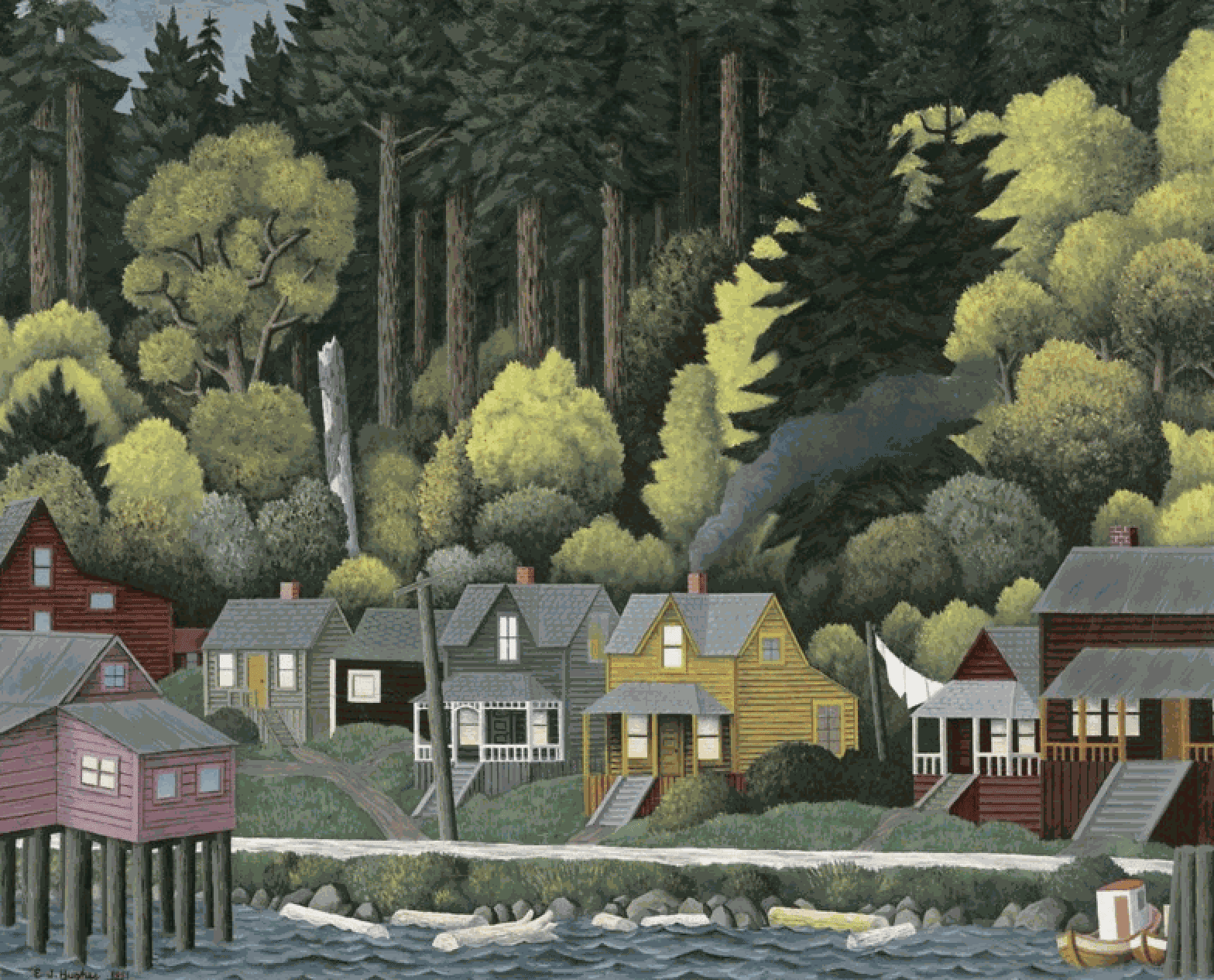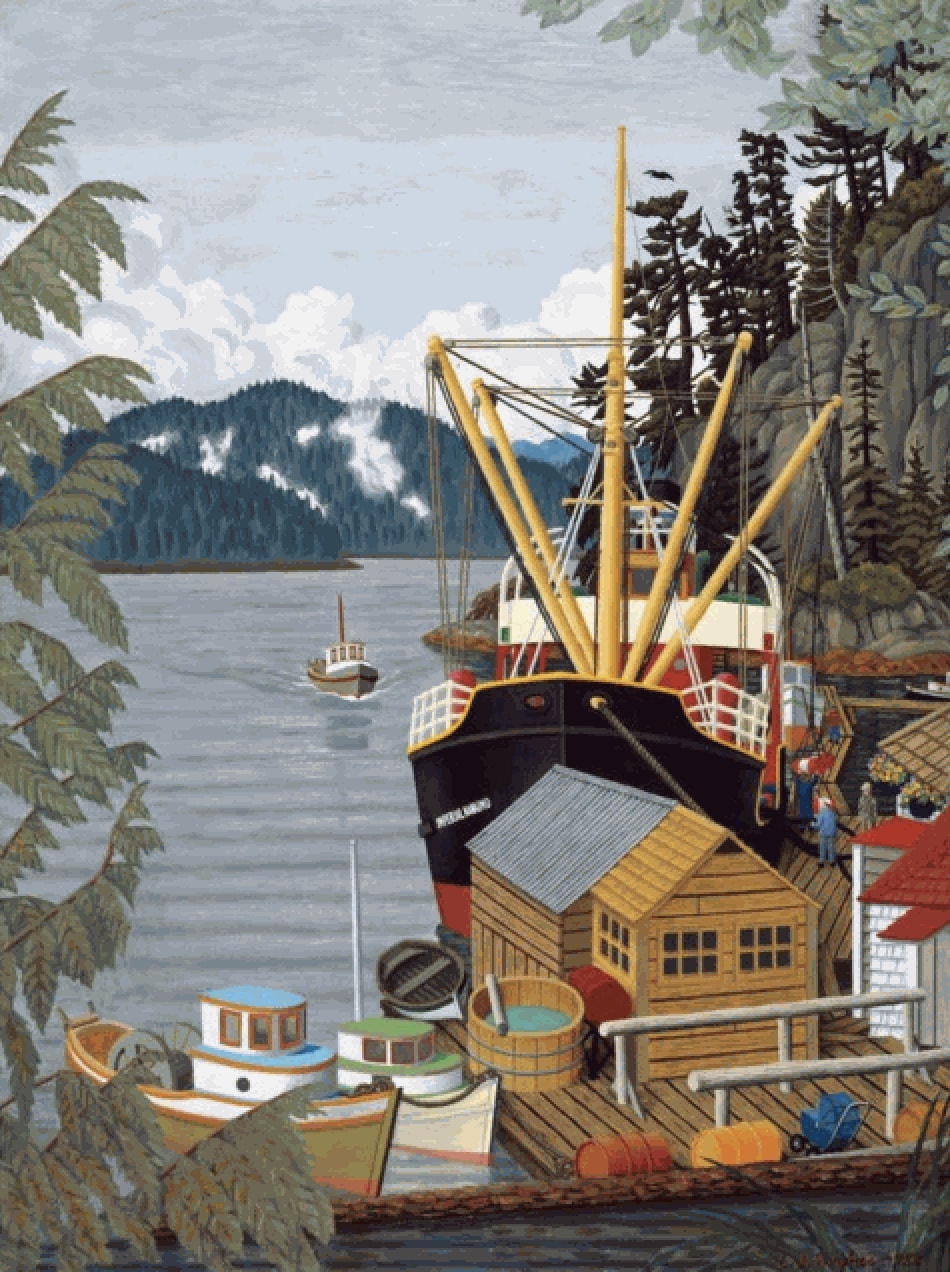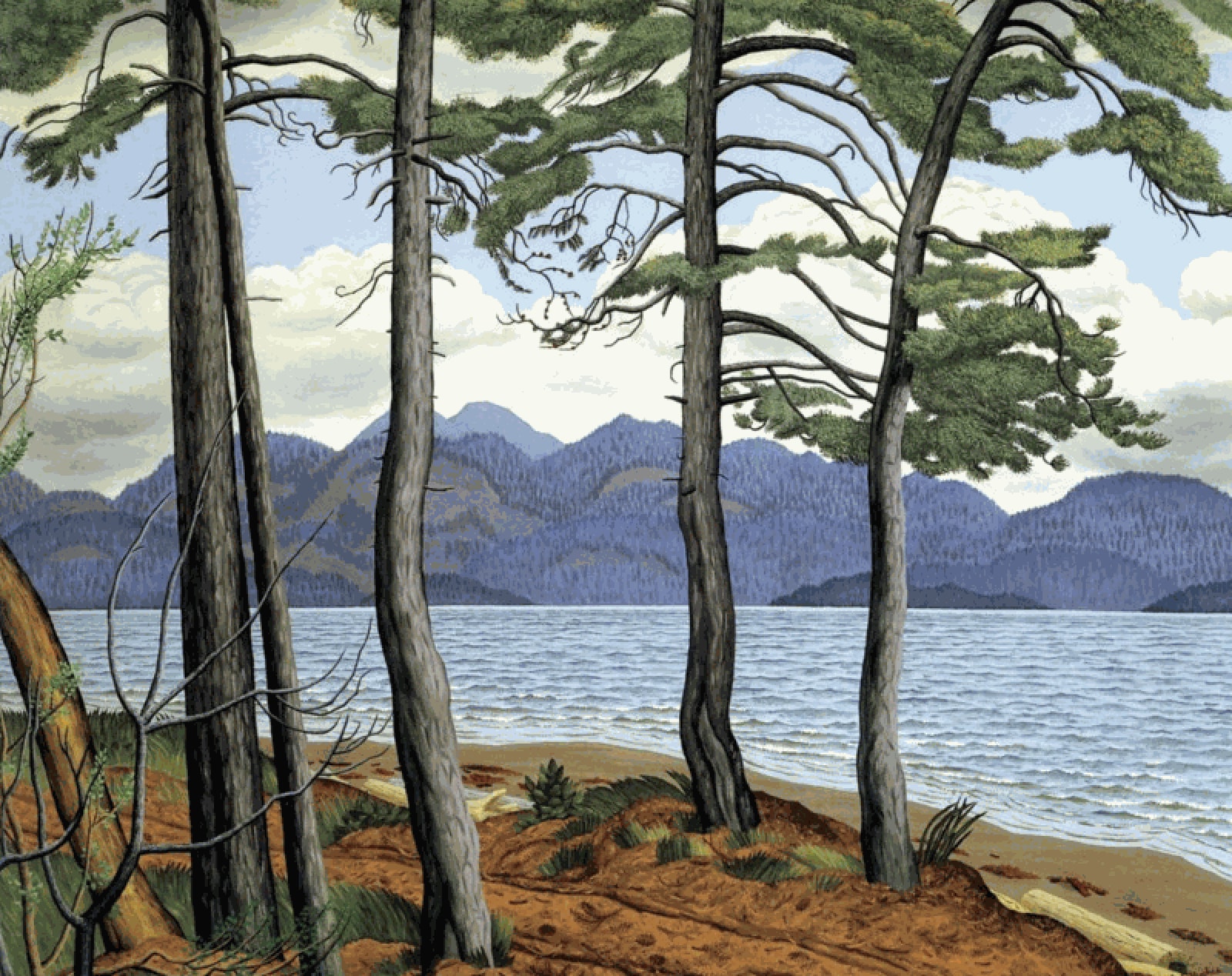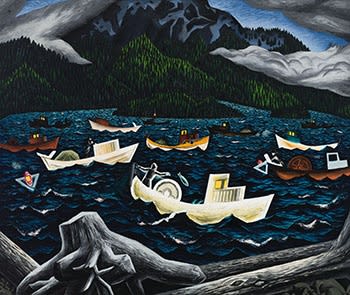E.J. Hughes was born in North Vancouver, British Columbia, in 1913 and grew up in Nanaimo on Vancouver Island. He studied at the Vancouver School of Decorative and Applied Arts and graduated in 1933 alongside artists such as Lawren Harris of the Group of Seven and Charles Comfort. During school, he was taught by Frederick Varley, another member of the Group of Seven, and J.W.G. (Jock) MacDonald. Early in his career, Hughes worked as a commercial artist creating dry points and linocuts and as a muralist before enlisting into the Canadian war effort in 1940.

Taylor Bay, Gabriola Island, 1952 by E. J. Hughes
During World War II, Hughes was the the longest serving official Canadian war artist, where he documented the military life in England and Alaska. There are over 650 works Hughes created during his time as a war artist now in the Canadian War Museum. After the war, he returned to Vancouver Island, where he lived and worked for the rest of his life.

Houses at Alert Bay, 1951 by E. J. Hughes
Hughes developed a distinctive style which is characterized by flattened perspectives, crisp outlines, and a graphic approach to British Columbian landscapes. He was considered a master of “observational realism,” a term coined by his official biographer, Robert Amos, after struggling to find a more precise way to describe Hughes’s unique artistic skill.
His paintings often feature boats, piers, ferries, coastal villages, and inland farmland. Through his dedication to painting the West Coast, he is often referred to as the heir to Emily Carr, however his artistic style varies highly from hers. Hughes' style is graphic and realist, compared to Emily Carr's post- impressionistic / German expressionistic loose style.
Unlike some contemporaries of his time, Hughes rarely painted people, instead he solely focused on landscapes and harbour scenes. His ability to combine technical precision with a sense of place gave his work broad appeal. Paintings such as Duncan, Chemainus, and West Coast Village are now iconic images in Canadian art history.

Echo Bay, 1953 by E. J. Hughes
Hughes received significant recognition during his lifetime. He was elected to the Royal Canadian Academy of Arts in 1969 and awarded the Order of Canada in 2001. His works are part of major public collections, including the National Gallery of Canada, Art Gallery of Greater Victoria, Canadian War Museum in Ottawa, and Vancouver Art Gallery.
Hughes was a private man, preferring a quiet life on Vancouver Island to public attention. However, his contribution to Canadian landscape painting during his seven decade artistic career is substantial. His images continue to show how the West Coast is visually remembered.

Trees, Savary Island, 1953, by E. J. Hughes
Today, E.J. Hughes paintings are in high demand, both at auction and in private collections, and his work remains a cornerstone of Canadian modernist landscape painting.

Consignment At Rookleys
At Rookleys Canadian Art, we are actively seeking works by E. J. Hughes for consignment, offering premium commissions far below what auction houses charge. If you have a Hughes painting to consign, please contact us at info@rookleys.com to discuss these opportunities further.